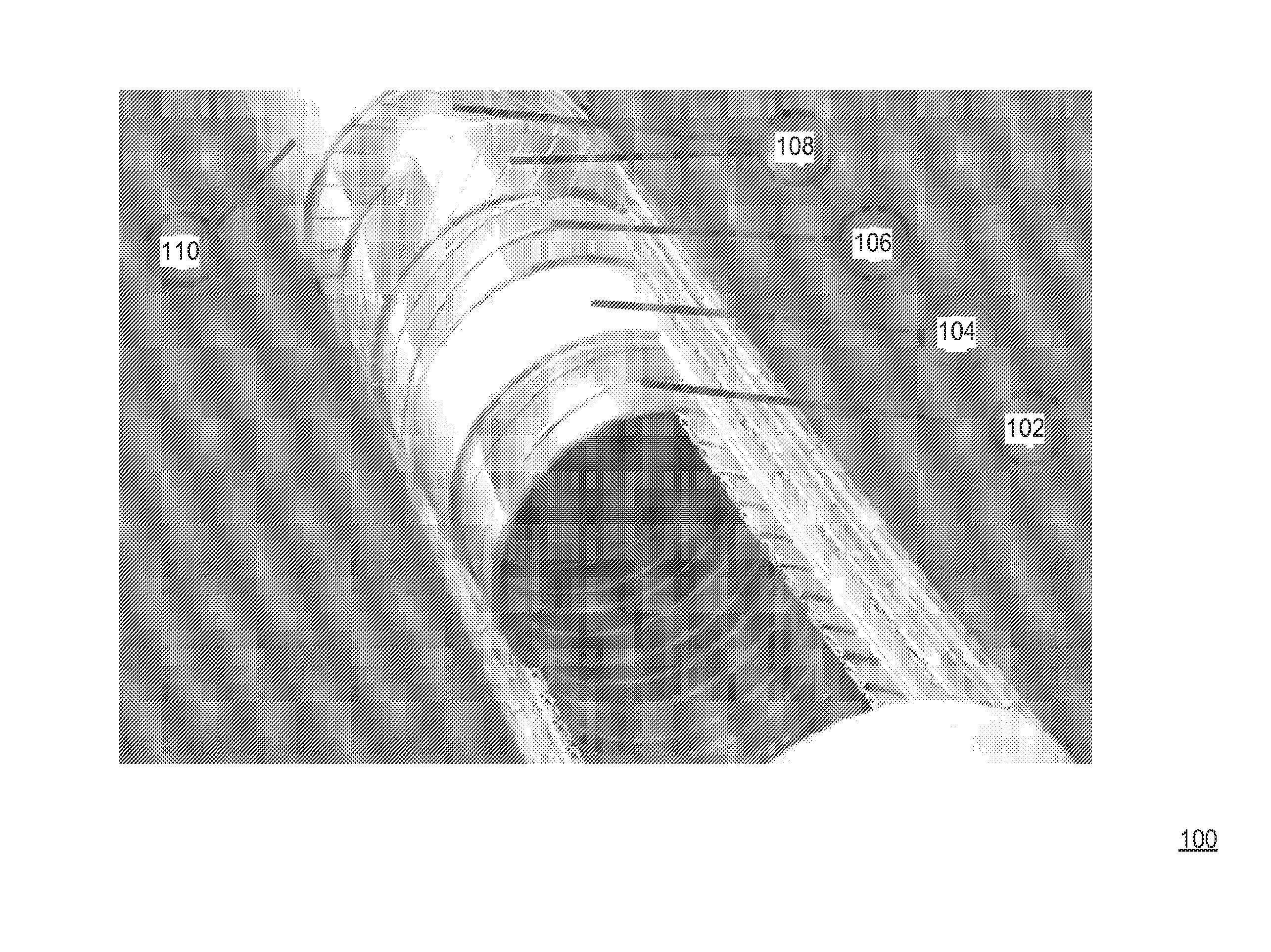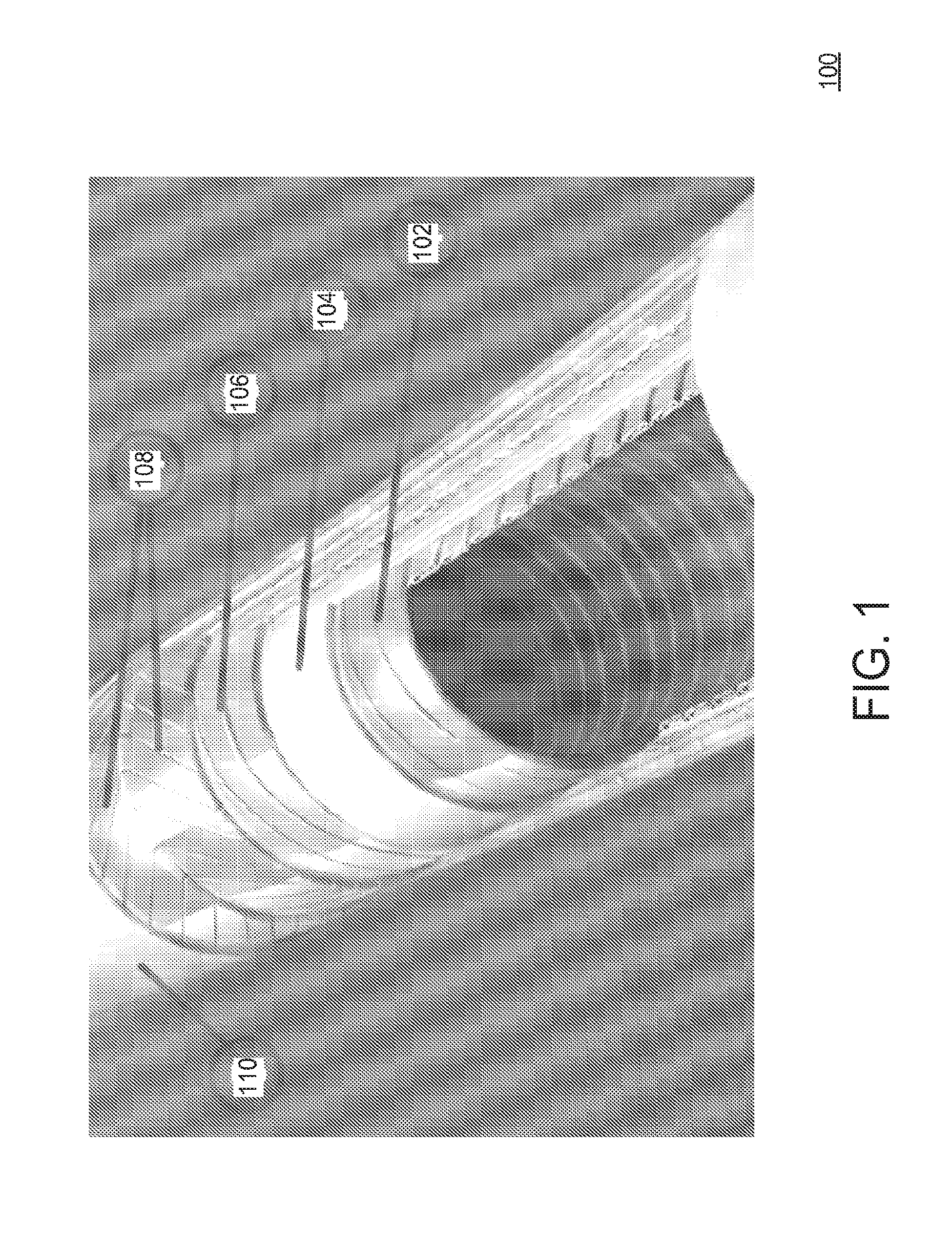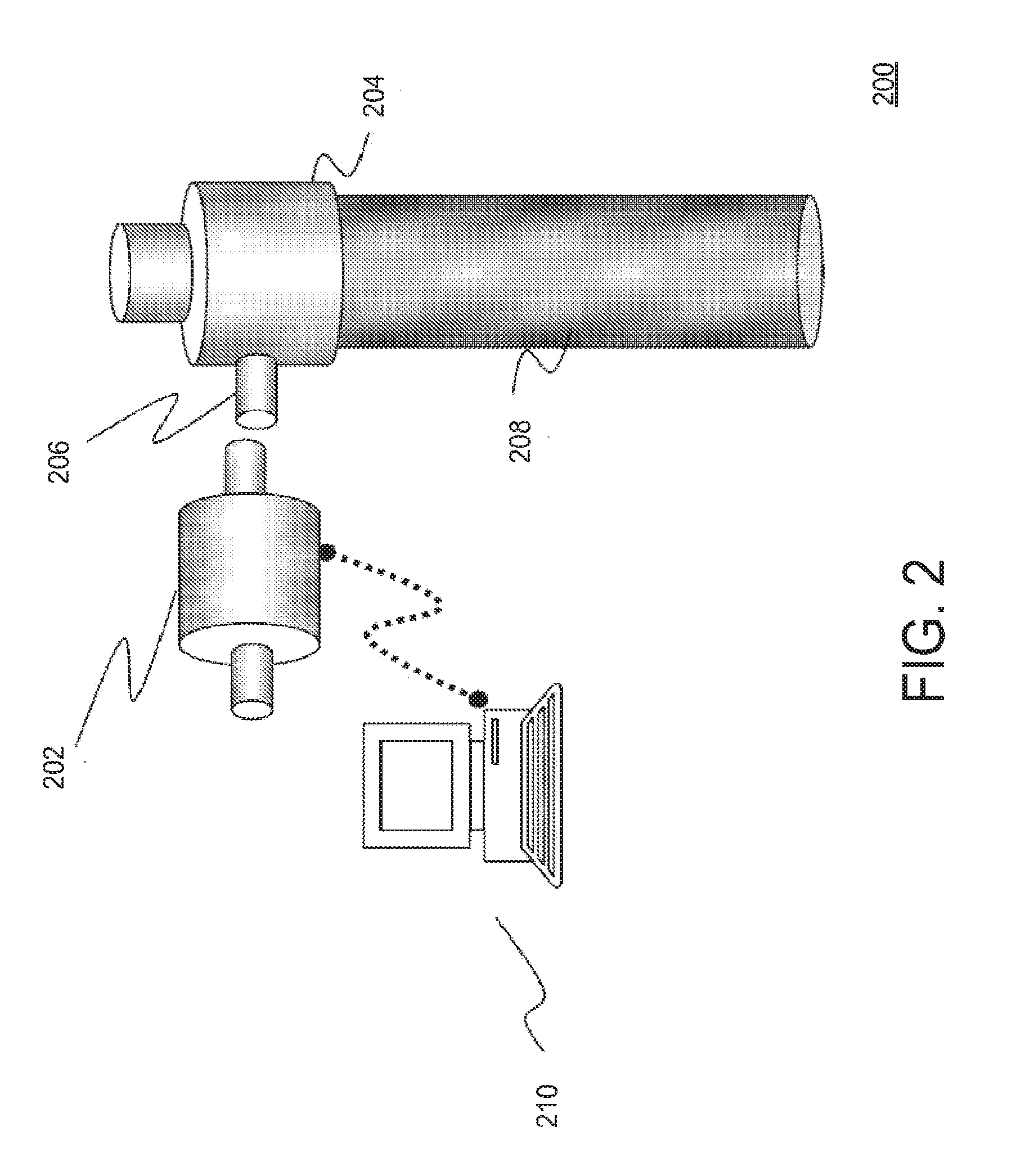In-Line Composition and Volumetric Analysis of Vent Gases and Flooding of the Annular Space of Flexible Pipe
a flexible pipe and vent gas technology, applied in the field of pipe structure monitoring, can solve the problems of infrequent and high cost for operators, corrosion and/or corrosion-fatigue type failure of the pipe structure, time-consuming process, etc., and achieve the effect of reducing the number of incidents and increasing the frequency of inspections
- Summary
- Abstract
- Description
- Claims
- Application Information
AI Technical Summary
Benefits of technology
Problems solved by technology
Method used
Image
Examples
first embodiment
[0031]Referring now to the drawings, wherein like reference numerals designate identical or corresponding parts throughout the several views, and more particularly to FIG. 1 thereof, there is illustrated a flexible pipe structure 100 which includes a carcass layer 102 (which may also be referred to as “carcass 102”) that is designed to keep the pipe 100 from collapsing to the external pressure to which the pipe 100 is subjected and is in permanent contact with the produced fluid. The carcass layer 102 is usually manufactured from a corrosion resistant material. A pressure sheath 104 (which may also be referred to as “inner sheath 104” or “inner liner 104”) is a polymer layer that is provided and designed to act as a pressure barrier keeping the produced fluids in the flexible pipe 100. A failure of the pressure sheath 104, for example, due to cracks and fissures, and the like, might allow fluid to enter the annulus and although it is designed to be impermeable to fluid, with time ga...
second embodiment
[0051]The present invention includes recognition that flexible pipes or risers have some drawbacks. Referring again to FIG. 1, the typical flexible pipe or riser structure 100 includes the many layers, each of which plays a different role from providing structural strength to providing isolation between the inside bore, which carries producing fluids, from the outside sea water. The steel reinforcing layers (armors 108 and pressure vault layer 106) are contained within a very confined environment called the annulus which is located between the inner polymer sheath 104 and the external polymer sheath 110. The inner sheath 104 is the barrier to the conveyed production fluids and the external sheath 110 protects against the seawater environment. If this annulus has water present in it, then the longer term integrity of the flexible riser 100 is compromised because of corrosion. It should be noted that although the inner 104 and outer sheaths 110 are impermeable, under high temperature ...
PUM
 Login to View More
Login to View More Abstract
Description
Claims
Application Information
 Login to View More
Login to View More - R&D
- Intellectual Property
- Life Sciences
- Materials
- Tech Scout
- Unparalleled Data Quality
- Higher Quality Content
- 60% Fewer Hallucinations
Browse by: Latest US Patents, China's latest patents, Technical Efficacy Thesaurus, Application Domain, Technology Topic, Popular Technical Reports.
© 2025 PatSnap. All rights reserved.Legal|Privacy policy|Modern Slavery Act Transparency Statement|Sitemap|About US| Contact US: help@patsnap.com



